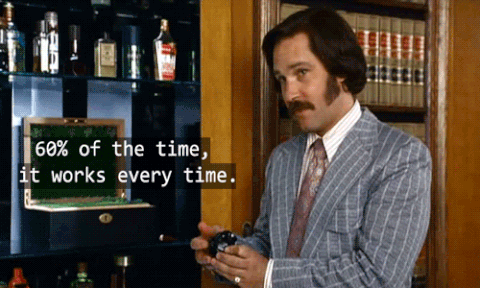The value of the extended free-throw possession
People often say offensive rebounds create “extra possessions”. This is a mislabelling. A possession begins when a team has the ball and only ends when the other team gains control. This happens after a made basket, a turnover, or a missed shot where the defense gains the rebound. That means offensive rebounds are actually extending possessions, not creating new ones.
In theory, a possession could last a whole quarter. If a team keeps missing shots and getting offensive rebounds, the possession would never end until the buzzer sounded. The team wouldn’t have any points mind-you, but neither would the other team. The only way for a team to score points and not give up the possession is free throws.
Staying with the same thought exercise, if a team made all the “dead-ball” free throws made available to them (one on a two-shot foul, two on a three-shot foul, and zero on an and-1) and missed the “live-ball” free-throws and got the offensive rebound every time, they would have kept their possession, but now have also put points on the board.
And if they kept doing this (getting fouled, missing the last free throw, and getting the offensive rebound), there’s no limit (in theory) to how many points they could score in a possession.
Why am I bringing this up? I think going hard for offensive rebounds on missed free-throws is a wildly underrated tactic. Watch any NBA game and watch how lazy guys are in going for the offensive rebound on the live-ball free-throw attempt. Teams only really emphasize doing it at the end of games, and only when they are in desperation-mode and trying to miss on purpose (as the clip above illustrates).
[Side bar: Coaches get furious when their team gives up an offensive rebound on a free-throw. Personally, I think this ire is misplaced. Assuming the player was trying to block out and it’s not an effort issue, a lot of times it’s not their fault. The ball can come off at weird angles on a free-throw attempt, often making it a 50-50 ball. And the defensive players aren’t given that much of an advantage by where they are being forced to stand on free-throw attempts. Usually its just plain bad luck, not poor technique or effort, that they gave up the offensive board. If you want to truly give the defense an advantage, let them stand in front of the offensive player before the release. But I digress…]
When the miss-on-purpose tactic works it looks brilliant. And it got me thinking: Should teams be trying to miss the live-ball free-throw all the time?
The Math
I’ve been thinking about this for a while, and after looking at it, I’ve landed on this: For the strategy to make sense the offensive rebounding percentage on that missed-on-purpose free-throw would essentially need to match the team’s overall free throw percentage unless your team was very efficient in the half-court offense. In that scenario, the offensive rebounding rate could be lower, and it still make sense as a strategy.
Let’s use U SPORTS as an example. The league average free-throw percentage in Men’s U SPORTS Basketball in the 19-20 Season was 69.9%. We’ll round that up to 70%. The Offensive Rebounding percentage was roughly 30% and the ORTG was 99.6, or roughly one point per possession.
While those last two numbers are for ALL shot attempts and possession types, let’s pretend it’s identical on a free-throw situation as well. I’ve included the Carleton Ravens – the nation’s number one offense last season (and perennially) - in the table below as a high-end offensive example to show that the math just doesn’t check out to miss on purpose with the current OReb rates.
The only way it would make sense, assuming a league-average offense, is if somehow you could raise your offensive rebounding rate on missed free throws to 80%. And if you had an above league average offense – like Carleton, but really any offense in the 100+ ORtg range - then your threshold to do it is lower still.
Something to consider as well is that a team’s offensive efficiency is higher when they collect an o-board off a missed free-throw. Which makes sense. The ball is usually right near the hoop or in the heart of the defense, ripe for a quick put-back or kick out for a good look.
So if players who are a part of a good offense could master the miss-on-purpose free-throw trick and ensure a rebound even as low as 60% of the time, then the move makes sense every time.






